| HOSTED BY |
A History of Art Forgery
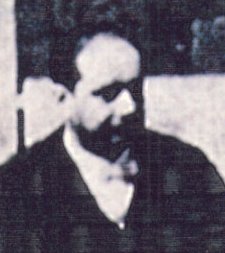 OTTO WACKER |
Otto Wacker had tried various professions before becoming an art dealer in 1925, including cabaret performer. “He was possessed of the confidence of a trickster's charm” (Walter Felichenfeldt). Before a major Berlin exhibition of the works of Vincent Van Gogh, he had succeeded in lulling the suspiscions of the leading expert on Van Gogh, De la Faille, and a host of other Van Gogh experts and Berlin gallery owners about the legitimacy of supposed Van Gogh paintings he had for sale. The experts issued certificates of authenticity for the Wacker paintings, even though waht is known in art circles as the provenances were obscure. Before the opening of this Cassirer Exhibition, the paintings had already been hung, with the exception of four which were still to come from Wacker. Space had been left for them on the walls, and when they were finally delivered and placed in their alotted positions, the general manager of the gallery stopped dead in her tracks. It was immediately clear to her that these paintings were fakes. |
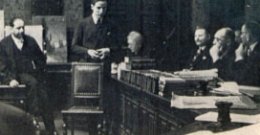 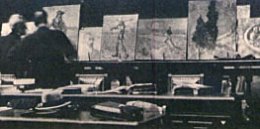 |
ABOVE LEFT: The art dealer Otto Wacker (center, behind chair) during the course of his trial in 1932. He was subsequently sentenced to a year’s imprisonment. ABOVE RIGHT: Some of the van Gogh forgeries form the backdrop
as the experts confer at the trial of Otto Wacker. |
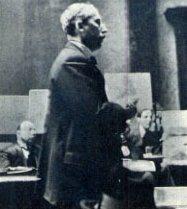 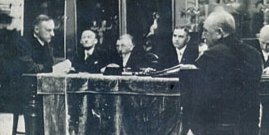 |
ABOVE LEFT: Vincent Wilhelm van Gogh, nephew of the painter, gives evidence at the trial of Otto Wacker. ABOVE RIGHT: The consequences of a forger’s work can spread
far and wide. As a result of the trial of Otto Wacker in the case
of the forged van Goghs, another court action arose against the
former directors of the Bank für Deutsche Beamte who
had been speculating in paintings on behalf of the bank. |
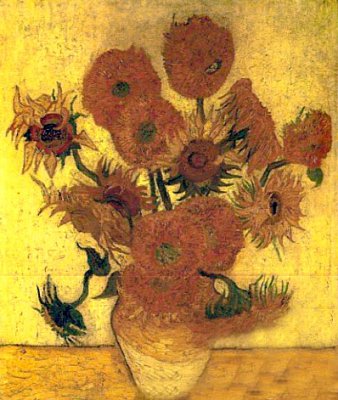 |
The most controversial Van Gogh painting is known as the Yasuda Sunflowers, purchased by Yasuda Fie and Marine in 1987 for $39.9 million. It's authenticity has been questioned because it's provenance can be traced back to an art collector/dealer who was known to have dealt in forgeries. Forgeries of the works of Vincent Van Gogh have raised more controversy than those of any of the Impressionists. ARTnews [summer2000] quotes Johannes van der Volk, curator of one of the most extensive Van Gogh colletions: “I would be not surprised if the number [of forgeries] would grow in the future to some 200.” Otto Wacker put thirty-three false Van Goghs on the market. When they were exhibited alongside the originals in the Berlin show in 1928, suspicion was aroused and Wacker was tried and convicted. All in all, he received a year's imprisonment. |
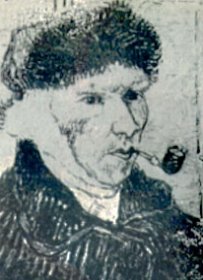  |
ABOVE LEFT: Self-Portrait with Pipe by Vincent Van Gogh (Arles, 1889: Private Collection). This painting was used as a model for a forgery. ABOVE RIGHT: Van Gogh forged self-portrait. The surface work has been embellished to cover up the forger's artistic shortcomings. For devotees of Van Gogh's work, a most comprehensive website containing excellent images of almost all of his known works can be accessed by connecting to the internet and visiting The Vincent Van Gogh Gallery. |
| Intro (1) (2) (3) (4) (5) (6) (7) (8) (9) (10) (11) (12) (13) (14) (15) (16) (17) (18) (19) (20) Look for updates to this exhibit every week. Also visit the companion to this exhibit: FABULOUS FAKES |
| Special thanks to people without whom this exhibition would not have been possible: Thea Eichler, NRCA; Billie Tucker, New Rochelle Library; Ivar Hyden, Backstreet Gallery and all the contributing artists. |
| Additional information about the availability of Fabulous Fakes, the History of Art Forgery or any of the works in the exhibition may be obtained by contacting The New Rochelle Council on The Arts by email or by calling 212-529-2025. More information on the NRCA can be found by connecting to the internet and clicking here. |
 Fabulous Fakes and A History of Art Forgery © J. L. Dolice, 2001, 2003.
|
| All images in this presentation may not be copied, stored in any electronic retrieval device or used in any way without permission in writing. ISBN 0-935901-51-5. |
| Art Forgery | Art Haus |